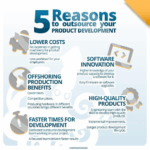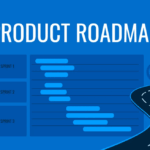Do you want to unwind the real magic of e-commerce sales and be a part of one of the fastest-growing markets in the world? It’s a combination of investment, the right suppliers, and optimization through efficient tools.
Did you know that global e-commerce sales are expected to hit $7 trillion by 2025? According to Statista, the reselling market grew by 30% in 2024, thanks to the increasing preference for online shopping and sustainable consumer habits.
So, why is this the perfect time to start reselling?
- Minimal upfront investment: Reselling business not every time requires hefty upfront costs. Numerous online platforms allow you to begin selling with no or little fees. Therefore, online business is accessible even for beginners on a tight budget.
- Access to global suppliers: Exploring suppliers around the world is just a click away! It’s quite an easy task to explore various products and choose the best one that suits your target audience.
- Tools to automate and scale: AI-driven tools and Apps help you optimize the product listing, and automated inventory software helps you track customer preferences. These tools make it possible to run a reselling business efficiently and at any scale.
Are you wondering where to source products to sell and maintain a competitive edge in the market? Before we learn how to source products for successful reselling, let’s take a look at how successful businesses have mastered this crucial step.
Case Study 1: The Supermarket Voucher Success Story
Sometimes, a $20 market voucher can become a $20 million empire. That’s precisely what happened with a UK-based couple.
It all started when they bought discounted vintage items and listed them on eBay, keeping in mind high-demand categories like home decor and collectibles. Want to check out their Sourcing strategy?
Here it goes!
- Local thrift shops: Thrift Stores offer unique or rare items that can be a massive hit among buyers looking for something unique.
- Clearance sales: The best part is to buy discounted or clearance items in bulk to get the product at a lower cost, boosting your profit margins when reselling it, specifically online.
- Wholesalers: As their sales grew, they turned to wholesalers, allowing them to scale their operations and offer products in bulk.
Persistence is the key. The couple faced challenges like managing inventory and ensuring product quality. Still, they kept reinvesting the profit and expanding into other niches like fashion and electronics, thus creating a multi-million dollar Empire and skyrocketing their sales.
Key takeaway: Start small, research demand, and diversify your sourcing strategies. Where to source products to sell early on is critical—local shops and online marketplaces are ideal starting points. According to a 2024 eMarketer survey, 65% of resellers began with small-scale sourcing.
Case Study 2: TikTok Creator Turned Entrepreneur
Have you ever thought your social media presence could help you launch a product line? Meet Sarah, a TikTok influencer known for her DIY crafts.
Sarah used her platform to create custom crafting kits, partnering with suppliers she found on Alibaba. Her sourcing strategy included:
- Alibaba’s verified suppliers: This platform is popular for finding trusted, verified suppliers. It ensures that you’re dealing with reliable vendors who offer quality products at competitive prices.
- TikTok Creator Marketplace: This unique marketplace connects influencers directly with manufacturers. It helped Sarah find the right products and connect with reliable suppliers quickly.
- Feedback from followers: Sarah used her loyal followers’ opinions and comments to refine her product line. Polls and feedback helped her understand what products would resonate most with her audience.
Her sales grew significantly within six months, thanks to her loyal fan base and well-designed products. However, Sarah faced challenges such as quality assurance and shipping delays. She tackled these by choosing warehouses closer to her customers.
Key takeaway: Social media isn’t just for marketing. It can also help you identify trends and find where to source products to sell that align with your audience’s needs. A 2024 HubSpot report reveals that 78% of small businesses use social media for product development and sourcing.
Some Reliable Sources for Sourcing Products to Sell
When you’re starting a reselling business, finding reliable sources for your products is key to success. Here are some trusted options to help you get started:
1. Wholesale Suppliers
Buying in bulk directly from manufacturers or distributors ensures cost savings and higher profit margins.
- DollarDays: Offers a variety of products for small businesses and nonprofits.
- Magnolia Fashion Wholesale: Specializes in boutique clothing at affordable prices.
2. Liquidation and Wholesale Companies
These sources provide surplus or liquidated inventory at significantly reduced prices.
- BULQ: Offers liquidation pallets with detailed manifests so you know exactly what you’re buying.
3. Online Marketplaces
Global platforms that connect you with manufacturers and suppliers.
- Alibaba: Ideal for bulk purchases and custom labeling.
- AliExpress: Great for smaller orders without minimum quantity requirements.
4. Amazon Business
Amazon’s wholesale division offers competitive prices for bulk purchases. You can source products from Amazon’s Best Sellers list to find trending items.
Explore Amazon’s Best Sellers list to identify trending and in-demand products.
5. Dropshipping Suppliers
With drop shipping, you can sell products without handling inventory. The supplier ships the items directly to your customers.
- Spocket: Features US and EU-based suppliers for faster shipping.
- Modalyst: Offers high-quality suppliers who manage fulfillment.
According to AMZSCOUT, in 2023, global retail e-commerce sales reached an estimated $5.8 trillion, with projections to exceed $8 trillion by 2027. This statistic underscores the rapid growth of the e-commerce market, emphasizing the importance of effective product sourcing to capitalize on this upward trend.
Lesson from Pros: Tips for Finding Reliable Sources for Your Products
Worried about finding reliable suppliers? Let us help you in resolving the mystery of how to source products to sell!
- Start with trusted platforms: Check out websites like Alibaba, Faire, or ThomasNet, which offer a wide range of suppliers with verified reviews. These platforms are reputable and trusted by resellers around the world. Whether you’re starting a new business or considering launching a new product in your e-commerce store, these websites will help you find the ideal supplier for your business.
- Verify supplier credibility: Strong and open communication with suppliers is crucial. It ensures product quality and timely delivery. Choose a trustworthy supplier, always check reviews, and request product samples before placing a big order.
- Visit trade shows: Events like CES and local expos offer excellent opportunities to meet manufacturers and suppliers face-to-face. This networking can help you find reliable suppliers to fulfill your needs.
- Diversify your sources: Multiple sources reduce risk and provide a backup plan if one supplier faces any issues. Therefore, it is essential to have multiple product sourcing options.
- Use AI tools: Befriend with evolving technologies! AI tools can provide insights into profitable products and suppliers, saving time and effort in your sourcing process. For instance, Platforms like Jungle Scout can help identify trending products and reliable suppliers.
Having a clear idea about where to source products to sell is like building a reliable supply chain that supports your business growth. According to a 2024 Gartner report, 50% of resellers use multiple sourcing channels to minimize risks and maximize profits.
Conclusion
A side Hustle can easily be turned into a full-fledged business, starting from thrift store finds and leveraging the power of social media. The success stories discussed above show that knowing where to source products to sell is the key to a successful reselling journey.
According to Statista, 72% of consumers in 2024 prefer brands that adopt sustainable practices. So, focus on strong branding, and be adaptable! Focus on sustainable yet AI-driven sourcing tools to effectively manage your inventory.
Ready to kick start your own success story? With the Sourcing tips and lessons shared here, you’ll be already on the right track. Remember, a successful venture begins with one small step—and definitely through a well-sourced product.
Expand Your Knowledge with Brand New MD
- Top 20 Best Product Design Companies to Watch in 2025
- How to Manufacture a Product and Sell It?
- What is Product Marketing? Definition and Its Importance
- Single vs. Multiple Sourcing: Key Differences
- 10 Latest Trends in Product Development in 2024
References
Global e-commerce sales projection
Source: Statista – E-commerce Worldwide
Reselling market growth by 30% in 2024
Source: eMarketer – E-commerce Market Trends
65% of successful resellers began with small-scale sourcing
Source: eMarketer – Small Business Insights
78% of small businesses use social media to inform product sourcing
Source: HubSpot – Social Media Marketing Trends 2024
50% of resellers use multiple sourcing channels
Source: Gartner – Procurement and Supply Chain









